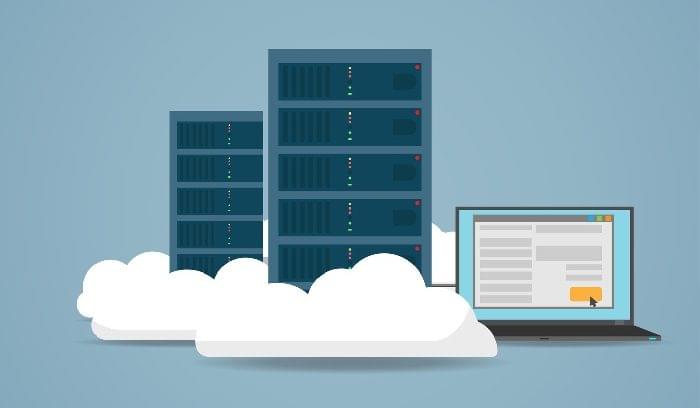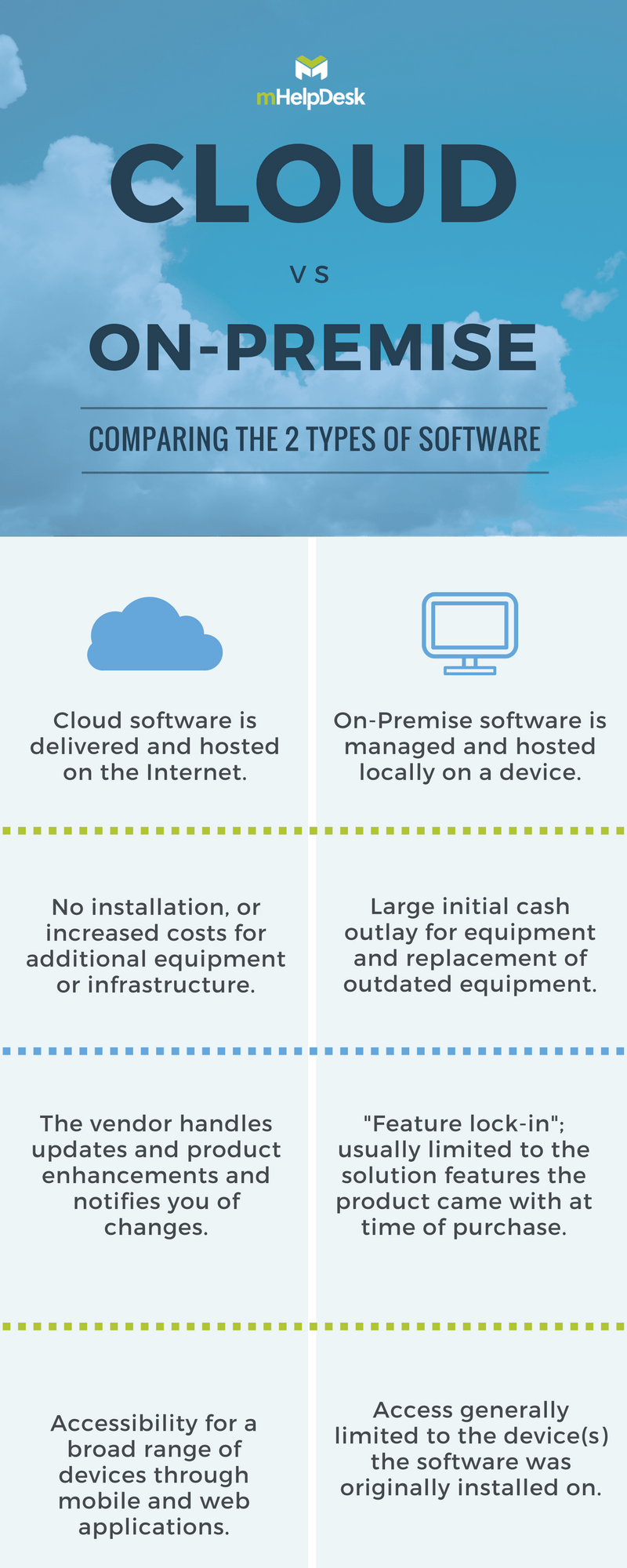The modern software buyer will find dozens, if not hundreds, of different solutions in almost every category of business IT. Of course, no software is one-size-fits-all, and though it can be overwhelming to choose, it is possible to find a solution that meets most of your business needs.
The key is to know what you should consider during the research phase. Your priorities will vary depending on your industry and the nature of your data and workflows. One decision that’s vital across every line of business is choosing between on-premise or cloud-based software, also known as software-as-a-service (SaaS).
Also Read: 4 Ways Cloud Computing Can Save Your Company Money
There are plenty of solid arguments on both sides of the fence, so it can be difficult to decide. Maybe you’re attracted to the versatility of mobile access but concerned about data privacy and security. Or maybe you prefer a desktop-based system but can’t afford a massive capital expenditure. Either way, there are a lot of considerations to make before you decide on cloud or on-premises software.
Jump to:
- Software hosting
- Pricing model
- Maintenance and bug fixes
- Data security
- Customization
- What is the time to implement on-premise and cloud solutions?
- Is on-premises or cloud software better for you?
Software hosting
Who hosts the software is, by far, the biggest difference between cloud-based and on-premise solutions. Cloud-based solutions are hosted on the vendor’s servers and accessed via the internet, which means you can use them from any location and any device with an internet connection. This hosting method means cloud-based software makes more sense for businesses with multiple locations or remote workers that often collaborate on projects.
On-premises solutions are hosted on your own servers and typically licensed for a finite number of devices. You’ll need to purchase all of the necessary hardware to host the software and make sure you have the in-house resources to keep it running. This works well for businesses that have the space to store large servers and software that only serves one location.
Pricing model
Another big difference between cloud and on-premise solutions is the pricing model. Most cloud solutions follow a monthly or annual subscription-based pricing model (i.e. software-as-a-service), while on-premise solutions incur an upfront fee, with additional fees for upgrades after purchase. Some SaaS tools also price their systems per user, requiring businesses to think about who really needs access to the software.
On-premise software requires a much larger investment up front due to the required hardware. For small to medium-sized businesses looking for a low barrier of entry and a low-risk investment, cloud-based software is usually a more viable option. Many cloud-based solutions also offer plans with no contract that can be canceled at any time. This is an attractive offer for a small business owner looking to test the waters before committing.
Maintenance and bug fixes
Another benefit of choosing a cloud-based solution is that your provider will take care of the regular updates and bug fixes automatically. You won’t have to dedicate in-house IT work to handling this routine maintenance, allowing your team to focus on other work.
Since on-premise solutions are installed on your device, they usually require manual upgrades to fix bugs, patch vulnerabilities, and keep the software current. In some cases, these updates may even cost an additional amount. Plus, they’ll require work from in-house IT — a department in which many businesses are understaffed.
Data security
One of the biggest reasons why companies thought on-premise solutions were a safer option than the cloud was due to a lack of confidence in cloud security in its early years. This way of thinking has shifted significantly over the last several years as more and more companies transition to the cloud. Cloud solutions do, however, regularly backup your data.
Even so, if data security is your highest priority — for example, if you handle sensitive customer information in a tightly regulated industry — an on-premise solution may be a good choice, so long as you’re willing to forego the benefits of working in the cloud. Industries such as healthcare and financial services have to follow certain government regulations that may require them to keep data stored in private data centers, which means the cloud is not an option.
However, some vendors now offer private and hybrid cloud deployments for businesses that want to enjoy the versatility of the cloud but keep all or some of their data separate.
Customization
Cloud-based software tends to be more rigid when it comes to customizations — a lot of companies offer a-la-carte options but for additional fees. When it comes to customization, on-premise software takes the trophy, but custom deployments and configurations come at a high cost.
Megavendors like Oracle, IBM, and Microsoft offer customized solutions tailored to your needs but at a much steeper price than simple cloud solutions. Not to mention, the complexity of a custom deployment often means you’ll need to hire a consultant or pay for an implementation specialist to get up and running.
For a customizable cloud option, it may be better to look at individual, best-of-breed software solutions vs. full suites. Then, you can connect these tools via APIs. This allows you to get the functionality you need without paying for features you won’t use.
What is the Time To Implement On-Premise and Cloud Solutions?
In most cases, you can test out a cloud-based solution by simply signing up for a free trial. After purchase, businesses can quickly import data from other platforms or accounts to speed up implementation.
On-premise solutions, especially in the case of custom implementations, take far longer to implement. They have to be built, installed, and set up, and a lot of data from other systems will need to be manually imported via spreadsheet upload.
Is On-Premises or Cloud Software Better For You?
Cloud-based deployments have made business software more accessible than ever, and the majority of businesses, small to large in size, are choosing it over on-premise because of cost, agility, and ease of use. On-premise solutions are still a viable option for companies with serious security concerns or compliance regulations, but even many of these companies choose cloud.
While the preference, for many, is cloud, you need to think about all the aspects of your business and the core factors we outlined here to choose what’s right for you.
Read Next: Four advantages of SaaS
Jorden Jackson is a Digital Media Strategist at mHelpDesk, a top-rated field service management solution. She is a regular contributor on the mHelpDesk blog, a resource with actionable insights and business tips for field service business owners. She specializes in marketing and social media strategy for SMBs, as well as video production and graphic design.



